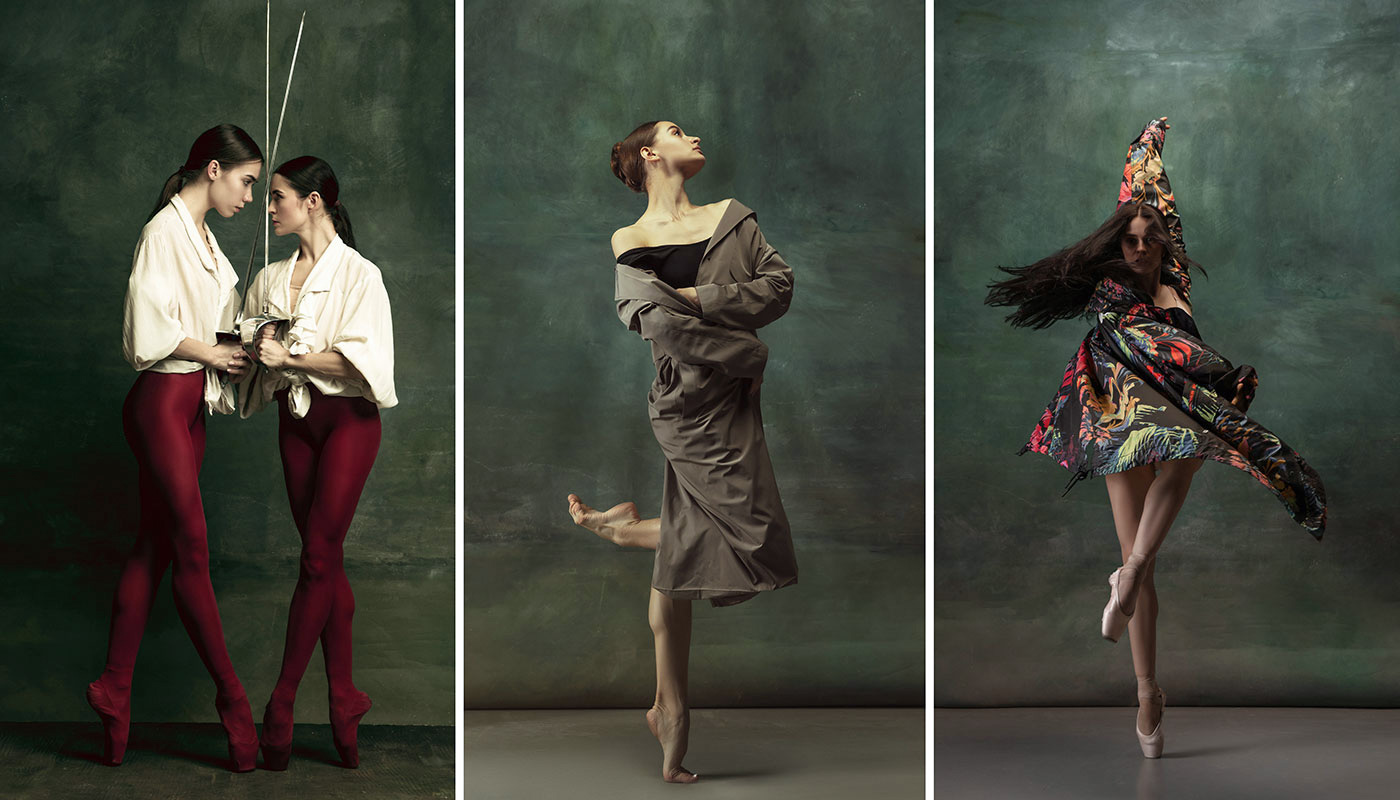
Belle of the Intellectual Property ball: fashion and trade dress
Whether we are talking haute couture or prêt-à-porter, looks are (almost) all that matters. And all while the fashion industry concerns itself with catching eyes and turning heads, Intellectual Property (IP) attorneys weave an invisible panoply of rights to preserve the designs, brands and businesses that define the latest chic.
It stands to reason that the demand for clothing, footwear and accessories is as strong as ever; only now, many beleaguered consumers are seeking out bargains. The financial stresses of inflation and wage shortfalls help to explain the rise in popularity of e-commerce websites and apps, as well as services that facilitate second-hand sales. Although reselling and independent retail help alleviate the environmental impact of "fast fashion," one of the unfortunate consequences of this trend is that brands, as much as shoppers, are increasingly vulnerable to fakes.
According to 2022's European Commission report on counterfeits in Europe, clothes and accessories are unsurprisingly among the favorite targets for criminals. And only to compound the risk to individuals and lower-volume sellers, the goods most commonly seized by customs agents are those ordered online and shipped by post or express courier.
Despite the bleak statistics, fashion designers, large and small, have many tools besides a sharp pair of shears to uphold their rights and shield their customers – as long as they are aware of them. IP protection is at hand to meet this need, but as with all things in the world of attire, it is no one-size-fits-all solution. Thus IP attorneys must tailor their advice to find a level of coverage for brand owners that leaves no delicate areas exposed.
Dressed to impress
Trade dress is one of the primary IP routes by which clothing brands can defend their identity and the integrity of their goods in the United States. This is just as well because many designers are likely to place their faith in more familiar rights, unaware that clothes in and of themselves are ineligible for copyrights as intrinsically functional products, or "useful articles" [17 U.S. Code § 101 – Definitions]. Besides a casual acquaintance with IP, another reason for such a proclivity could be that this reductive interpretation of usefulness fails to account for the artistic vision and skill applied in creating an original fashion piece. Consequentially, the United States Supreme Court addressed the issue in STAR ATHLETICA, L.L.C. v. VARSITY BRANDS, INC., et al. (2017).

Although they automatically apply when creating an artistic work, copyrights cannot be relied upon as the sole IP protection for unique clothing designs. This is due to the fact many clothing elements are primarily functional in spite of their aesthetic presentation.
The Court reaffirmed that simply displaying a creative work as part of a utilitarian item does not disqualify it from copyright protection: If the work can be rendered separately and imagined to be eligible in isolation, then it is eligible.
However, this is only a partial solution to the problem. Arguably, the true genius of fashion design lies in the arrangement and balance of stylistic choices; abstracting designs in this way does not account for the presentation as a whole. Hence trade dress is a more satisfactory, if still imperfect, approach that trademark professionals can share with their clients. However, care should be taken to emphasize that this is not a sui generis right but rather an aspect of trademark law that covers a product's ornamental or aesthetic features, taking into consideration the overall appearance and its perception by a would-be customer.
Mixed fortunes for fashion trademarks
As indicators of commercial origin, trademarks are especially valuable for brand owners yet boast a versatility that may surprise the most experienced traders. Take the European Union trademark reform of 2017 as an example. It opened up opportunities for trademark applicants in Europe by abolishing the graphical representation requirement and making it easier to file non-traditional marks, including pattern marks, position marks and holograms. Of course, many of these forms might not be immediately useful to most clothesmakers, but this openness to novel trademark types makes the EU Intellectual Property Office (EUIPO) a welcoming stage for creative minds.
On the European IP catwalk, few trademarks are as striking as Christian Louboutin's "colour red (Pantone 18‑1663TP) applied to the sole of a shoe." First registered as a Benelux trademark in 2010, the EU Court of Justice affirmed the registration eight years later against invalidity proceedings. In the eyes of the Court, "a sign consisting of a colour applied to the sole of a high-heeled shoe, such as that at issue in the main proceedings, does not consist exclusively of a 'shape', within the meaning of [Article 3(1)(e)(iii) of the 2008 Trade Marks Directive]." This placement was purely ornamental and unconventional enough to guarantee Louboutin's continued exclusivity – and all the allure and infringement damages that come with it. Since strutting onto the Benelux scene, the mark has been registered as a figurative or position mark in many jurisdictions, including the EU, United Kingdom, United States, India and Brazil.

Trademarked fashion designs have distinctiveness stitched into their fabric. The difficulty lies in conceiving a piece that is original enough to be eligible while also being attractive enough to warrant such protection. The bizarre and the impractical might not be worth the effort.
As beneficial to maintaining a prominent and desirable brand image trademarks are, a difficulty faced by many applicants in the fashion industry is proving distinctiveness. In a judgment in January 2022 (Case T-483/20), for example, the EU General Court upheld a decision that a trademark for the three-dimensional shape of snow boots was invalid.
It agreed with the EUIPO Board of Appeal that "the constituent elements of the contested mark, taken individually, and the shape of boot taken as a whole, will be perceived by the relevant public as possible, or even common, variants of the presentation and decoration of winter boots and after-ski boots, which are part of the goods at issue." The ruling against MOON BOOT makes it clear that it is hard to trademark the general shape of apparel in Europe unless that presentation significantly departs from what would be commonly expected for the type of product.
Nevertheless, this objection can be overcome if a product is shown to have acquired distinctiveness through use. A rarefied status even among the biggest brands, the European courts have confirmed that there is a high threshold to prove this level of consumer awareness in the EU. Although the provided evidence does not need to pertain to each Member State, it must be capable of demonstrating acquired distinctiveness throughout the EU and not only in a substantial part or the majority of the region.

Claims of acquired distinctiveness need measurable evidence to back them up. Market exposure, media discussion and the presence of physical stores are strong corroborative facts, but there are no guarantees in the fashion world.
For example, in Case T-275/21, the EU General Court found that Louis Vuitton Malletier had not met this strict requirement in regard to its EU trademark (EUTM) application for its chequerboard pattern. The fashion house had not proved acquired distinctiveness in Bulgaria, Latvia, Lithuania, Slovakia or Slovenia (states in which it had no stores). Though the evidence of marketing materials and other publications in Estonia was sufficient to qualify in that country, this was not enough to justify an EUTM registration.
Protected by design: alternative IP rights
Design rights (both registered and unregistered) are another means of protecting fashion items in Europe, provided the design is novel and has individual character.
Crucially, registered Community designs should not be made available to the public before the 12-month period preceding the priority date (except where the disclosure could not reasonably have become known to the relevant circles). Crocs, unfortunately, fell foul of this provision, and its registered design was invalidated on the ground that it had been revealed on its website, at an exhibition in Florida and in the marketplace.
The invalidation decision was sustained by the EU General Court in a judgment in 2018 (Case T‑651/16): "[T]he applicant failed to establish to the requisite legal standard that the three disclosure events established by the Board of Appeal could not have become known in the normal course of business to the circles specialised in the sector concerned, operating within the European Union." The parties subsequently settled, and the invalidation application was withdrawn, yet further procedures are pending.

The adage "all publicity is good publicity" might hold true for acquiring distinctiveness but not so for registered designs. Early disclosure online or elsewhere can scupper a designer's chances of securing this type of IP protection.
It can be all too easy for clients to become caught up in the enthusiasm of a show-stopping new look, but when it comes to keeping a hold of their IP rights, it pays to be discreet – even if their latest garment is not.
The future of fashion IP
Looking ahead, the metaverse and augmented reality applications offer many fashion brands an exceptional opportunity to engage with new consumers and sell virtual products. In this context, it is notable that the latest (12th) edition of the Nice Classification for trademarks includes "downloadable digital files authenticated by non-fungible tokens (NFTs)" in class 9.
And there are already many lawsuits concerning infringement on and through virtual reality platforms. Notably, in February 2023, Hermès won a damages award in the United States after a jury found that artist Mason Rothschild's sales of METABIRKIN NFTs infringed the trademark rights to its famous line of handbags. In June, the presiding judge, Jed Rakoff, simultaneously granted Hermès a permanent injunction and denied Rothschild's calls for a new trial, snapping shut the case and locking the fastener.
Clearly, the threats to fashion extend beyond unexpected downpours and wayward pasta sauce. IP rights are indispensable for protecting clothes and accessories, ensuring that consumers are not ripped off and that the significant investments made by brand owners are rewarded. Ultimately, an effective IP strategy requires creativity and diligence, meaning the mix of registered rights you recommend to clients could be as original as their wardrobe – or yours.
A version of this article was first published on the CITMA website, September 2023.
Filed in

Master the trademark filing process to avoid common pitfalls and secure your brand successfully.



